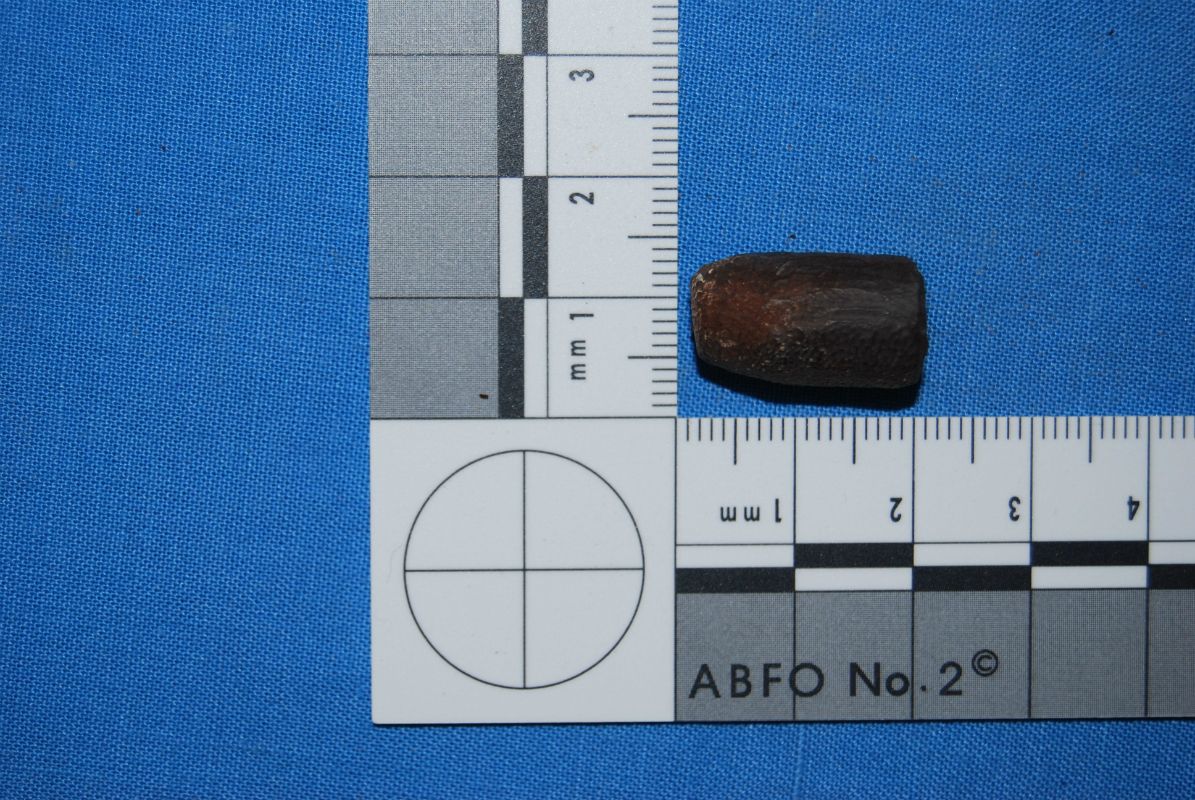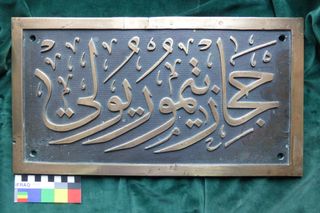Bullet Links Lawrence of Arabia to Famous Ambush

The early 20th-century British military leader T.E. Lawrence, widely known as "Lawrence of Arabia" for allying with and advising Arab forces fighting against Ottoman Turks, wrote about taking part in a train ambush in Saudi Arabia in 1917 that proved to be a pivotal skirmish during the Arab revolution.
In the decades since Lawrence published the memoir "Seven Pillars of Wisdom" describing his wartime experiences, critics have accused him of exaggerating or even falsifying his participation in certain events. For instance, some biographers have said he embellished his role in the Hallat Ammar train ambush, recognized by historians as a clash that helped define tactics used in modern guerilla warfare.
But now, archaeologists have discovered a piece of evidence that appears to place Lawrence at the scene of the ambush. It's not quite a "smoking gun," but it's the next best thing — a bullet fired from a Colt 1911 automatic pistol, a gun that Lawrence was known to have carried. [Photos: The Oldest Known Evidence of Warfare Unearthed]

A distinctive weapon
That type of gun was unlikely to have been used by anyone else at the ambush, said archaeologist Nicholas Saunders, one of the leaders of the team that investigated the site. Saunders co-directs the Great Arab Revolt Project (GARP), whose members have excavated a number of Arabian Desert locations where key battles were fought during the Arab Revolt between 1916 and 1918.
A Jordanian army escort accompanied Saunders and his team during their work on the ambush site, which lies in a demilitarized zone between Saudi Arabia and Jordan. A metal detector led the researchers to the bullet, Saunders told Live Science in an email.
Though the bullet was clearly different from the hundreds of other expended cartridges at the site, the archaeologists didn't recognize the find's significance right away, Saunders said. Handgun experts on the team conferred with an international network of specialists to identify the bullet as originating from a Colt 1911 automatic pistol, rather than from a rifle or other pistol of British, German or Turkish make that accounted for most of the spent ammunition the researchers found.
Sign up for the Live Science daily newsletter now
Get the world’s most fascinating discoveries delivered straight to your inbox.
"It was the only Colt 1911 bullet found at Hallat Ammar," Saunders said, adding that Lawrence was the only person known to carry one of these guns during the ambush.

Another recent find by Saunders' team further bolstered the credibility of Lawrence's Hallat Ammar ambush accounts: a train nameplate that Lawrence took as a souvenir and gave to a friend's family, and which had been lost for nearly 80 years, Saunders said.
Most of the train ambushes led by Lawrence would have happened too quickly to allow him time to safely collect a memento, Saunders said. But the lengthier Hallat Ammar ambush, which involved two locomotives, could have provided Lawrence with the time he needed to remove an engine's plate.
GARP's archaeological efforts, originally slated for three years, have extended for nearly a decade.
"We wanted to understand and investigate the landscape in which modern guerrilla warfare had been 'invented' and to see if it was possible to find archaeological evidence of this," Saunders told Live Science, adding, "We found far more than we originally thought."
Follow Mindy Weisberger on Twitter and Google+. Follow us @livescience, Facebook & Google+. Original article on Live Science.

Mindy Weisberger is an editor at Scholastic and a former Live Science channel editor and senior writer. She has reported on general science, covering climate change, paleontology, biology and space. Mindy studied film at Columbia University; prior to Live Science she produced, wrote and directed media for the American Museum of Natural History in New York City. Her videos about dinosaurs, astrophysics, biodiversity and evolution appear in museums and science centers worldwide, earning awards such as the CINE Golden Eagle and the Communicator Award of Excellence. Her writing has also appeared in Scientific American, The Washington Post and How It Works Magazine. Her book "Rise of the Zombie Bugs: The Surprising Science of Parasitic Mind Control" will be published in spring 2025 by Johns Hopkins University Press.










